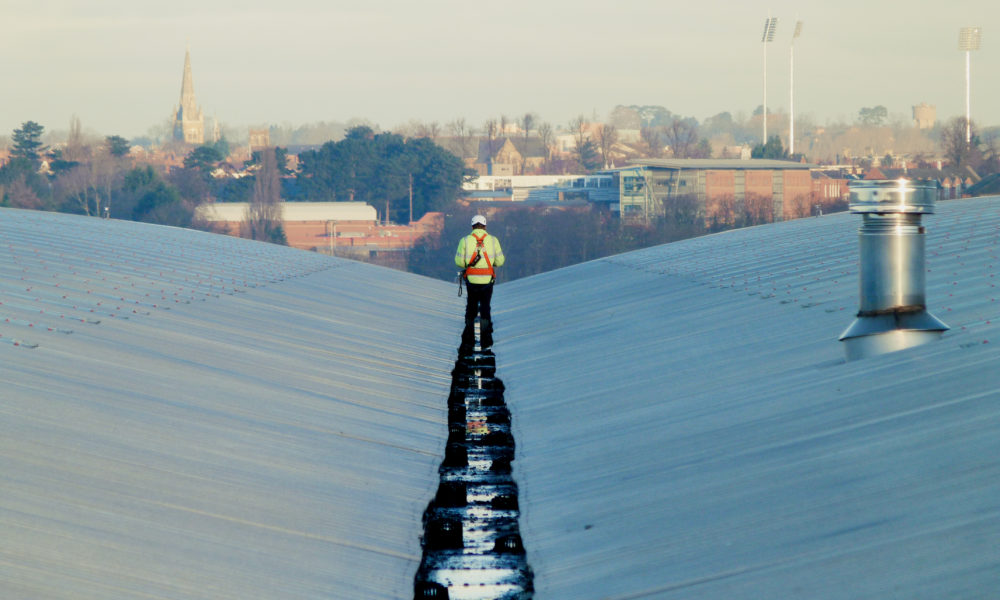The Dry Test is also known as the brush test, a holiday test, or spark test.
How does it work?
This method works by using the principle of electricity arcing or discharging from a brass brush head to a conductive surface below the waterproof membrane. Most membranes in common use today are non-conductive although there are some exceptions to this, and this should be considered before deciding which test to use.
The brush head is charged from a battery pack and passed over the membrane. When the bristles pass over a defect the electricity arks to the conductive surface below. The discharge is similar to the static electricity sparks created when you remove a woollen jumper and there is a cracking noise. Most units are also fitted with a bleep alarm to alert the operator in case the discharge is missed.
Once detected, the defect can then either be repaired or marked on the roof and on a plan for repair once the suitable materials and a skilled roofer are on site.
Modern testers can generate a voltage of up to 40,000v using direct current and as such can generate a discharge on membranes up to 30mm thick. This makes the test suitable for membranes such as asphalt on concrete and Reinforced Bitumen Membranes (RBM) as well as liquid applied and single ply membranes. Care has to be taken to make sure the voltage is not set too high for the type of membrane to prevent the discharge from damaging it and causing additional pin holes from the bubbles of gas that develop under the surface when the membrane is curing.
Advantages
- Large areas can be covered quickly e.g. single ply roofs.
- Does not require a particularly skilled operator
- Will work on pitch roofs
Disadvantages
- The test may miss defects where the membrane has been lapped, such as seams on single ply or RBM. Variations in membrane thickness such as pooled areas of liquid applied can also affect the test.
- Too low voltage can lead to defects being missed, but too high will cause damage to the membrane.
- The test is weather dependent, the membrane must be dry.
- The test will not work through finishes installed over the membrane, e.g. slabs, decking or green roof. The membrane should be tested before these are applied or they will have to be removed to allow the test.
- The test will not work if the correct roof build up has not been identified. Single ply on tissue PIR not foil faced for example.
- Equipment requires regular service/ calibration.
Summary
In ideal circumstances the dry test will work very effectively at covering large areas of membrane where the roof is dry and the build up has been correctly identified. The test must have a conductive surface directly under the membrane such as hot melt on concrete and the voltage set correctly. The test will not work on conductive surfaces such as EPDM which has a very high carbon content or some new hybrid membranes which also have a high carbon content. The test also does not work on Topdek panels. All seams and detailing work should be checked with a lapscribe or seam hook before the test begins. Also known as the brush test, a holiday test or spark test.














